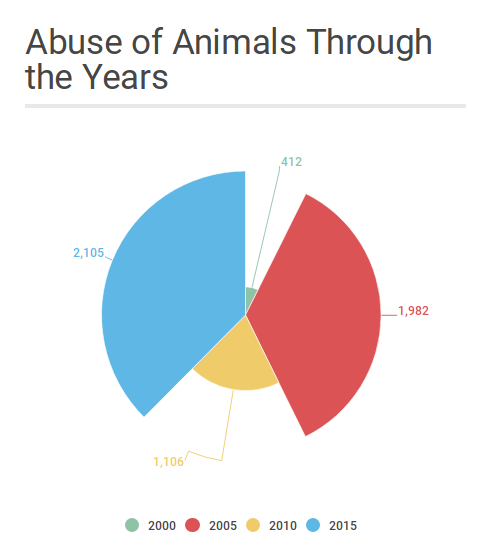The ongoing battle against animal cruelty presents a disheartening tableau of suffering, where silence looms heavy in the air, obscuring the plight of countless beings. Each year, innumerable animals, much like the leaves of an ancient forest, fall prey to the insidious specter of abuse. It is critical, as advocates for their welfare, to illuminate the severity of this issue through a meticulous examination of the data surrounding animal cruelty.
The vast magnitude of suffering is represented in striking statistics that emerge from various reliable sources. It is estimated that millions of animals, encompassing a diverse array of species, endure mistreatment annually. These figures serve as stark reminders that cruelty is not an isolated phenomenon but a pervasive affliction that permeates our communities, affecting domestic pets, livestock, wildlife, and even laboratory animals. Each statistic serves as a testament to the urgent necessity for collective action.
One must first delineate the categories of animals affected. Domestic pets, including cats and dogs, form the heart of this disconcerting narrative. According to available data, it is conservatively estimated that approximately 1 million cases of animal abuse are reported each year in the United States alone. This figure represents a mere fraction of the actual occurrences, as many instances go unreported, buried in the silence of homes where individuals turn a blind eye to visible signs of neglect and abuse.
The Epstein-Barr virus of this crisis extends its reach to the livestock sector as well. Farm animals often live in deplorable conditions that escape the scrutiny of societal oversight. The reality for many of these animals is a life marked by confinement, malnutrition, and violence. Annually, billions of chickens, cows, and pigs are subjected to conditions incompatible with their well-being, suffering egregious pain in the name of profit and convenience. Yet, the narrative remains uncoupled from accountability, as often the systems in place lack the transparency necessary to instigate reform.
Wildlife, too, is not spared from the clutches of brutality. Poaching remains a significant threat, driving numerous species to the brink of extinction. The illicit wildlife trade, fueled by insatiable demand for exotic pets and ornamental items, sees millions of animals captured and subjected to horrific treatment. According to estimates, this illicit enterprise results in the death of over 100 million individual animals each year, each one a protagonist in a tragic story overlooked by the very species that claims dominion over the earth.
Moreover, the hidden realm of animal testing reveals a grim underbelly seldom addressed. Millions of animals, including rats, mice, and primates, are used annually in laboratories for research purposes. They endure procedures often causing suffering and distress. While legislative actions have been initiated to reduce animal testing, the numbers remain staggering. In the United States alone, approximately 100 million animals are subjected to testing annually, a perplexing juxtaposition of scientific advancement against ethical existentialism.
The emotional toll of this cruelty cannot be quantified. Each statistic represents a sentient being, endowed with the capacity for pain, fear, and suffering. This mental tapestry woven with trauma manifests through various societal symptoms, such as desensitization towards violence and a pervasive culture of neglect. When confronted by staggering data, one often feels as though they are standing in the eye of a storm, where chaos reigns and the cries for help are drowned by the roar of apathy.
Public awareness is paramount in disrupting this cycle of cruelty. Organizations dedicated to animal welfare work tirelessly to bring these statistics to light, advocating for laws that protect animals and working to provide safe havens for those affected. Social media campaigns, community outreach, and educational initiatives have begun shifting the paradigm, encouraging vigilance and empowerment among individuals to foster change.
Nevertheless, the path forward is laden with obstacles. Those who engage with this issue must wrestle with the complexities of human behavior—the fascination that many hold towards their pets juxtaposed with the neglect of farm animals or the oblivion towards wildlife tragedies. The journey towards universal empathy necessitates introspection, the alignment of advocacy for all beings, transcending species lines.
In conclusion, the data reveals a stark reality: animal cruelty is not just a footnote in our societal narrative but a critical chapter that necessitates our unwavering attention. Millions of animals grapple with the corrosive effects of cruelty each year, their suffering echoing like a distant thunderclap, a call to arms for all advocates of compassion. Recognizing this crisis, the collective conscience of humanity is urged not merely to bear witness but to take actionable steps towards a more enlightened future—one where the suffering of our fellow beings is met with outrage, mobilization, and reform. As stewards of this planet, it is our responsibility not just to coexist but to cultivate a world where kindness replaces cruelty, fostering a landscape where every creature can flourish in the light of compassion.








